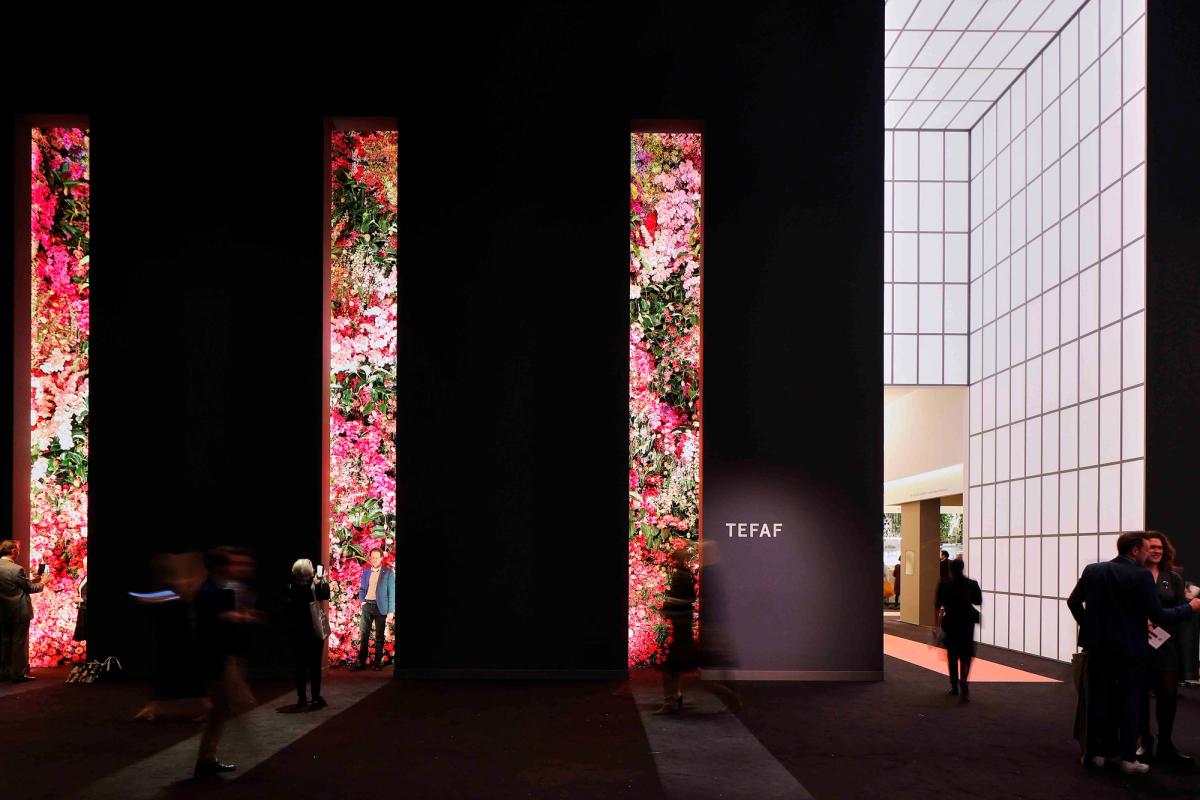Art fairs are rife with social awkwardness at the best of times. Add in a highly contagious virus and you have the perfect etiquette storm.
As exhibitors and visitors grappled with the latest news about the coronavirus (Covid-19), yesterday’s VVIP opening of the 33rd Tefaf Maastricht was awash with 50-somethings attempting fist pumps, awkward elbow bashings and some kicking of shins as the more adventurous attempted the so-called Wuhan shake.
One exhibitor, the Paris- and Geneva-based Bailly Gallery, has even produced branded hand sanitisers. Although these had been ordered back in November, they were strangely prescient—with a global run on the stuff, this may be among the best investments at the fair. Other exhibitors had been posing bottles of hand gel on plinths alongside Roman busts during set up—an elevation that rather aptly reflects near heroic status of the humble sanitiser in these nervous times.
Wry jokes aside, trepidation among the 285 exhibitors was palpable at the opening of Tefaf as a raft of fairs were cancelled or rescheduled across Europe due to the virus; in the past two days, Art Paris has announced it is moving from April to 28-31 May and Milan’s Miart from April to 10-13 September, while Artmonte-carlo has cancelled its event next month, to return in 2021.
Yet Tefaf Maastricht has gone ahead, and the general opinion is that while the fair has been quieter (the 4,000 visitors that arrived yesterday is a 29% decrease in opening attendance from 2019) and business slower than in previous years, it has certainly not been the unmitigated disaster many feared. “Up until Friday it was touch and go whether it would happen,” says Jonathon Green of the London-based picture dealer Richard Green. On whether it was the right decision to continue, he says: “I’ll let you know at the end—who knows, I hope so.” Green adds: “We’ve had challenges before—I suppose the outbreak of the Gulf War compares to it.”
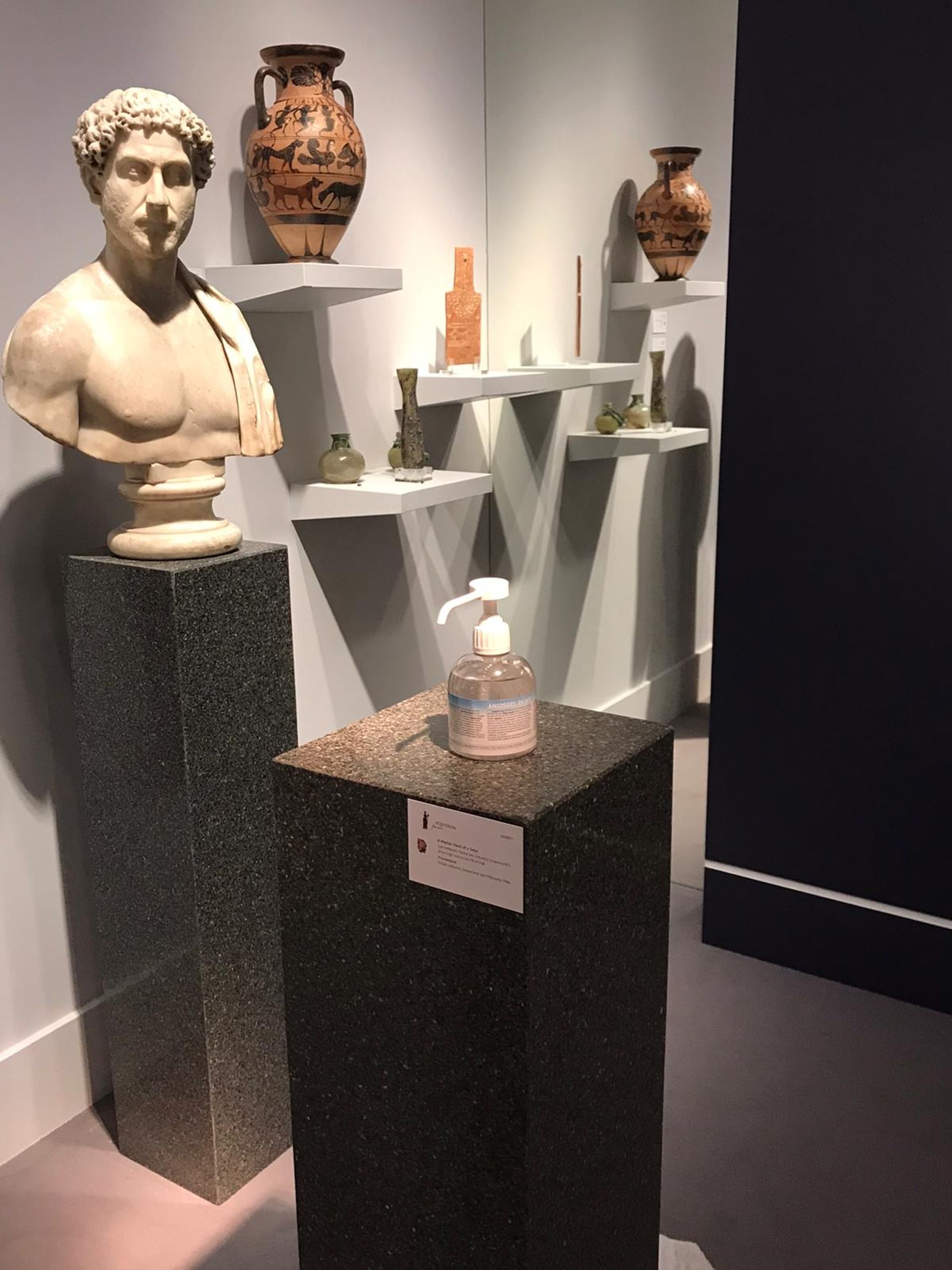
A rare and much-prized hand sanitiser takes pride of place amid the antiquities during the build of Tefaf Maastricht Courtesy of Robin Katz
The fair opened minus three exhibitors—Wildenstein and Co, Fergus McCaffrey and Galerie Monbrison—who decided not to take part due to coronavirus and around 10 members of its vetting committee (including some from the US and Italy) who could not attend due to travel restrictions or personal decisions not to travel, according to Wim Pijbes, the global chairman of vetting.
“For a lot of people, with all the anxiety in the world recently, the opening has been a big relief—to be told by the government, you can do this, it was like, ‘Phew’,” says Patrick van Maris, Tefaf’s outgoing chief executive.
Although expectations were low for many exhibitors, the Madrid-based dealer Nicolás Cortés was among those surprised, not to mention relieved, to have a successful opening day. Exhibiting for the first time independently from Colnaghi (he split from his former business partner Jorge Coll in 2018) Cortés made the big early sale of the fair—two wings of a 16th-century altarpiece by the Flemish painter Adriaen Thomasz Key, showing a particularly human portrayal of a male donor with Saint Jerome and a female donor with Saint Clare of Assisi. The wings had been in a private collection in Madrid and, with an asking price of €3m, the pair sold yesterday to a private foundation “in the low countries”, says Cortés, who also made around seven other sales during the opening day and has a gargantuan painting by Joaquín Sorolla y Bastida, titled Before the bullfight, on reserve.

Adriaen Thomasz Key's wings of an altarpiece, showing male donor with Saint Jerome and a female donor with Saint Clare of Assisi, sold for €3m at Tefaf Maastricht Courtesy of Nicolás Cortés
A difficult decision
Six weeks ago, Tefaf started considering the possible impact of coronavirus on the fair and communicating with local authorities, say van Maris and Tefaf’s chairman Nanne Dekking. The fair’s “special relationship” with the local authorities helped, Dekking says, since they call the shots with health situations in the Netherlands. “We had to explain to them the logistical specifics of a fair like Tefaf. It’s not like other events—this is 1,000 people in one space for a week to build it etc.” Van Maris adds: “We don’t know anything about viruses, so we have to trust their decision. At first, we started communicating every week, then every day, then every morning, every afternoon.” The crunch point came last weekend, when it was finally decided that the fair could go on.
The Tefaf fortnight is hugely important for Maastricht’s economy and the local authorities’ close relationship with the fair could be construed as a conflict of interest in deciding whether it should go ahead. Van Maris says: “We pushed our partners very hard on whether they have a vested interest in the fair going ahead and they were almost offended.” Dekking adds: “Maastricht is very reliant on tourism and to have an outbreak of coronavirus here would be terrible for the city—they made an unbiased decision.”
However, numerous exhibitors have been speculating that the fair might close early due to the virus. In response, Van Maris says: “We would only shut the fair if the local and health authorities said to us, ‘It’s now irresponsible for you to continue with the fair’. That’s the only reason we would close early.”
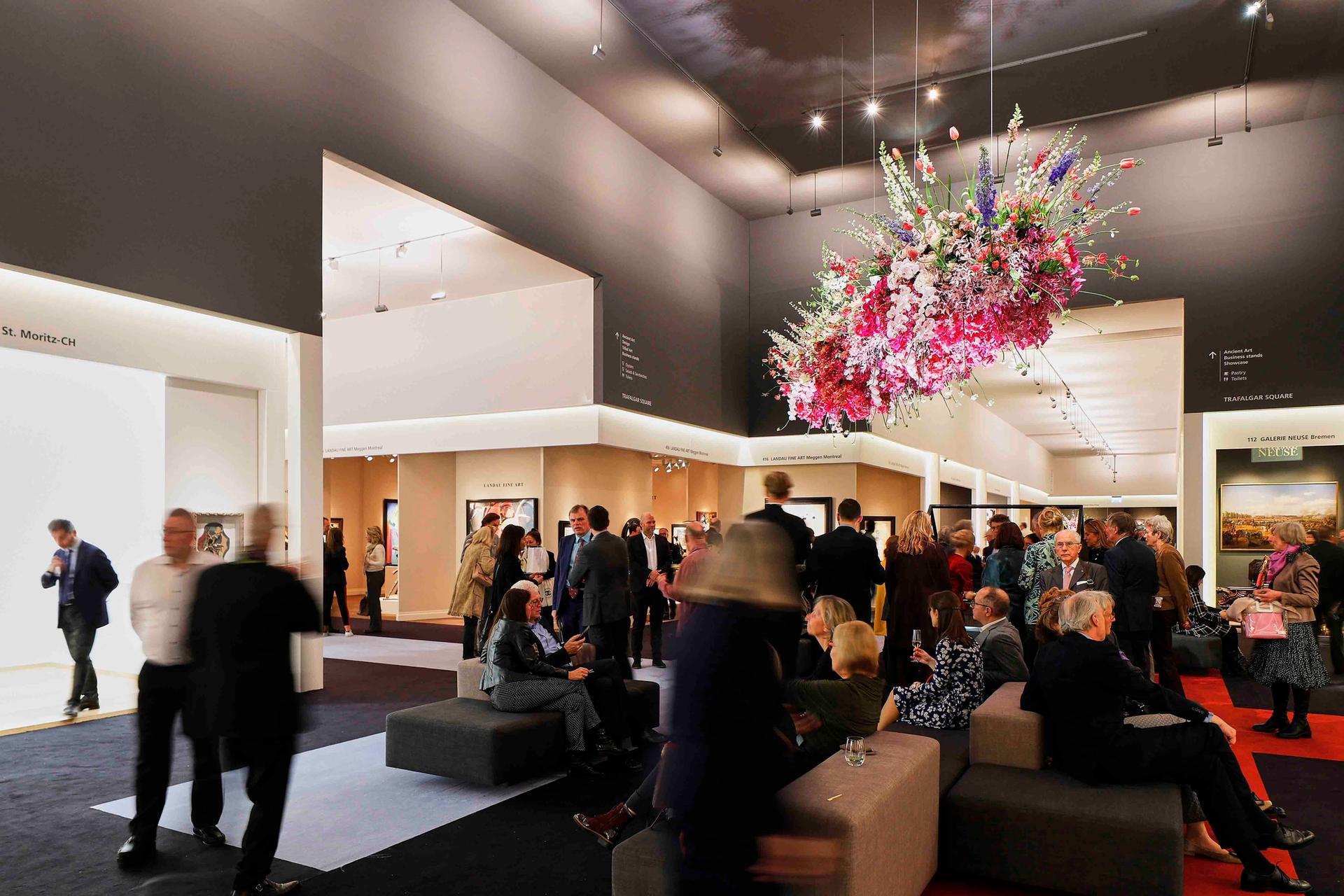
Local authorities said Tefaf Maastricht could go ahead last weekend, by which time the fair was built Courtesy of Tefaf
Some—but not all—US visitors stay away
While yesterday’s opening was less crowded, it was still reasonably busy, although many galleries say they’ve had 20-30% of clients cancel their trip. The London and New York-based Old Master specialists Colnaghi, for instance, have had 30% of the 250 invitees to their dinner this evening at the lavish Château Neercanne drop out, says Victoria Golembiovskaya, the firm’s new chief executive who went into business with Jorge Coll six months ago.
“This is a good turnout for any fair,” says the first time exhibitor Ayo Adeyinka of the African contemporary art gallery Tafeta, which is taking part in the Showcase section for new galleries. Adeyinka is simultaneously exhibiting at the Armory fair in New York and flew in yesterday morning on the red eye flight to Amsterdam in order to attend his first Tefaf. By the time he arrived a couple of hours after the opening, a friend manning the stand had already sold two works—Baga Nimba (Wood-Chrome, 2019) a sculpture by the Nigerian artist Niyi Olagunju, priced at £30,000 and the large charcoal and pastel drawing Tribal Marks Series III #52(2019) by Babajide Olatunji, also from Nigeria, for £12,500.
However, US buyers were notably absent, in particular representatives from the museums who are normally pivotal buyers at Tefaf, particularly for the Old Master paintings dealers who see Maastricht as the most important fair of the year. Museums missing from the opening days included New York’s Metropolitan Museum of Art, the Saint Louis Art Museum, Los Angeles’s The Getty (“Our staff planning to travel to Maastricht voluntarily decided not to go,” a Getty spokeswoman says) and Washington, DC’s National Gallery of Art (“The health and safety of our staff is of utmost importance to us,” a spokeswoman says).
“I have traditionally relied upon this fair as my main access to American museums, and they’re not here,” says the London-based dealer Sam Fogg, adding: “I’d love to hear that business is good but I doubt it. Having said that, I’m reasonably pleased with the turnout.” An hour into the opening, Fogg had sold a Pieta group (around 1510-20) from Champagne, France, for around €100,000 to a French collector. “It’s the kind of thing we could not have sold a few years ago, people didn’t want to live with a dead Christ,” Fogg says. “But now, if anything, grim subjects seem to be more popular—twee is bad and boring is bad.”
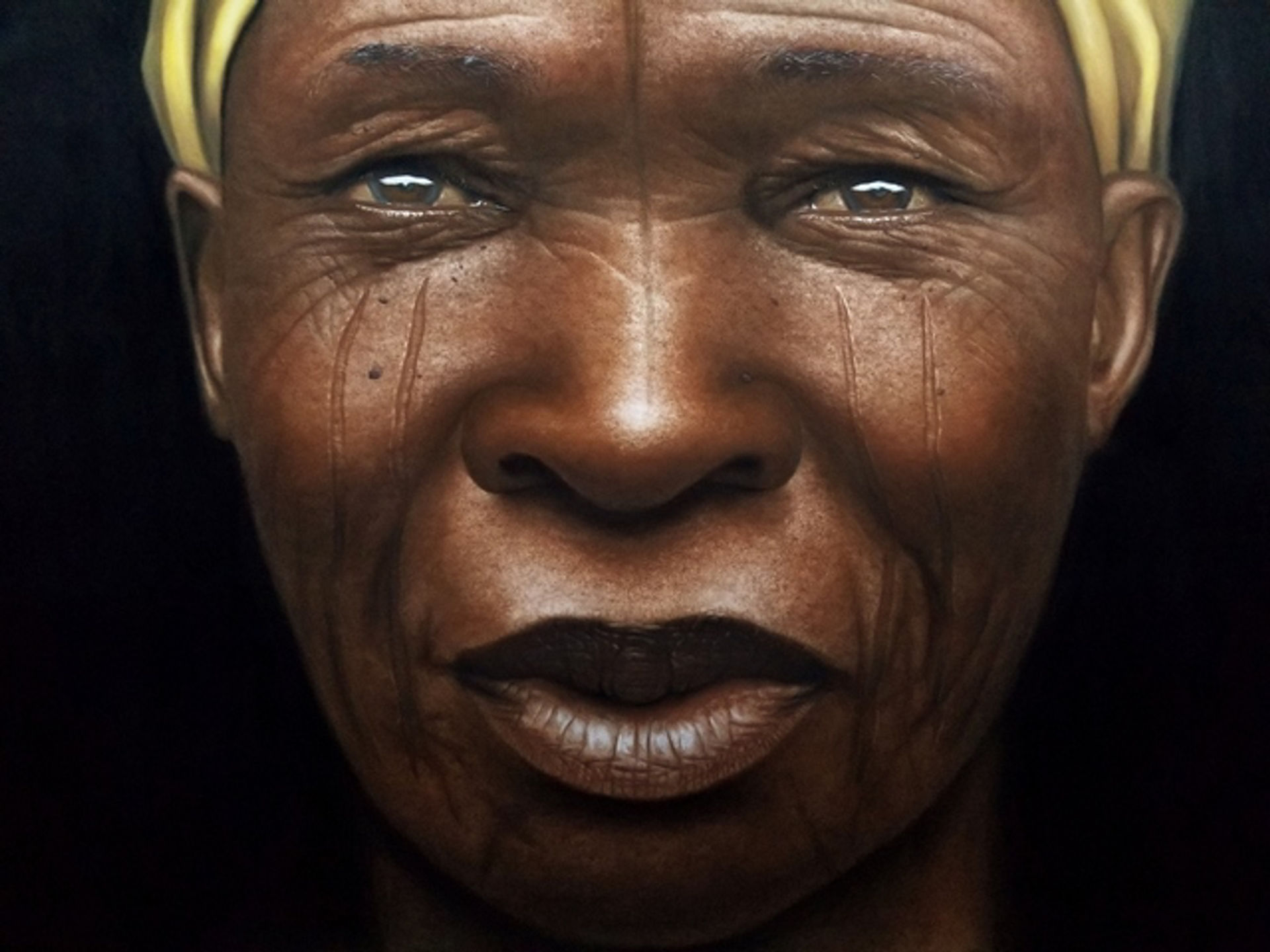
Tribal Marks Series III #52 (2019) by Babajide Olatunji Courtesy of Tafeta
Some chose to see the bright side—one exhibitor (who wishes, for obvious reasons, to remain anonymous) says: “There’s something to be said for not having to entertain big, attention-seeking entourages from US museums—there’s an expectation that you should drop everything at the expense of other clients.”
That said, a few US museums did turn up—the sculpture specialist Stuart Lochhead, exhibiting for the first time independently, had visitors to his stand from the Minneapolis Institute of Art, the Detroit Institute of Arts, the Museum of Fine Arts, Boston and the Dallas Museum of Art alongside others, plus the Louvre in Paris, London’s Victoria and Albert Museum and Florence’s Uffizi. (Lochhead was awaiting confirmation on a few sales at the time of writing).
The London-based gallery Agnew’s sold a work to an anonymous US museum—a Lombard School depiction of Christ at the Column from around 1510, which had a six-figure price tag. The gallery sold two other works yesterday—a diminutive roundel of an interior of a cathedral (1621) by Hendrick van Steenwijck the Younger, again priced in the six figures, and a late Still Life with a Pipe (around 1936-38) by André Derain, for a five-figure sum.
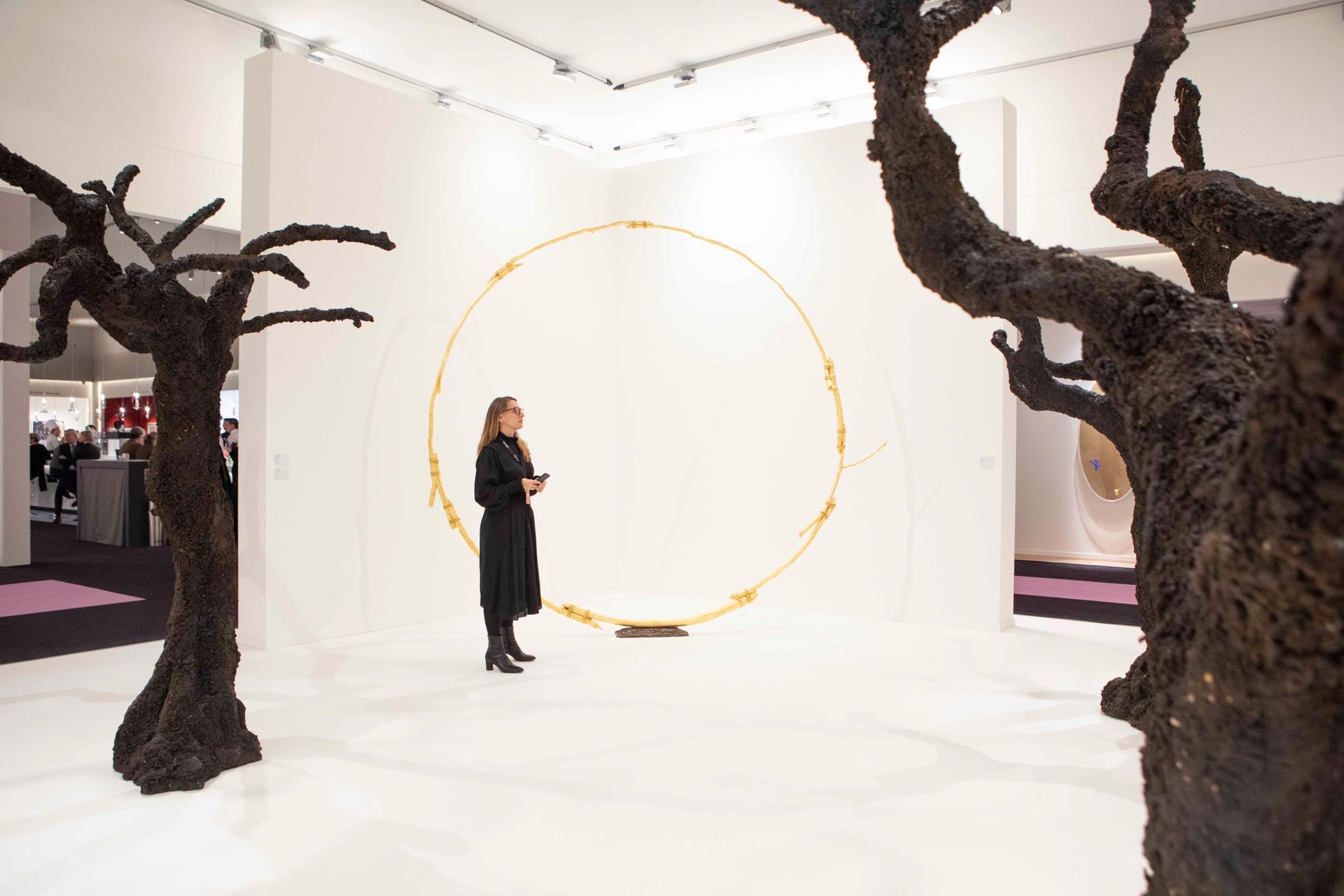
Kamel Mennour's stand with Ugo Rondinone's tree and sun works Courtesy of Tefaf
Newcomers
While Old Masters are still the fair’s mainstay, in the—once again—shaken up Modern section of the fair the second-time exhibitor Kamel Mennour from Paris, better known on the contemporary art fair circuit, created an imaginative, almost contemplative stand based on the idea of the romantic landscape. Titled Trees of the forest, you truly know my soul!, the exhibition takes its name from a Victor Hugo quote and is dominated by three life-sized, gnarled trees by Ugo Rondinone, titled The Jasmine and created from resin, earth and dried jasmine. One of these has sold, alongside Rondinone’s gilded bronze circular piece The Sun at 12am (2019) and Eugene Carriere’s delicate sepia oil on canvas of a tree, Le Chêne de Henri IV (1896-1901)—Mennour declines to give prices. “There are fewer people this year, but it’s a more concentrated, focused audience,” Mennour says. His stand echoes the Trees show which opened earlier this week at London’s Hayward Gallery, though Mennour says this is a coincidence: “I started planning this in November and had no idea that Ralph [Rugoff] was planning the show. I think it’s something in the zeitgeist—a response to rising nationalism, the virus, people are returning to nature.”
The Modern section had several contemporary art newcomers, including Lisson Gallery of London and New York, whose early sales include:Mary Corse’s large-scale Untitled (1987), made from glass microspheres in acrylic on canvas ($550,000); Lee Ufan’s acrylic on canvas Dialogue (2019) at $500,000 and Stanley Whitney’s abstract Morning Song (2020), priced at $200,000. Also making a Maastricht debut is Galleria Continua (based in San Gimignano, Les Moulins, Beijing, Havana and Rome) whose opening day sales included a number of works from its solo booth of Antony Gormley sculptures from his Massive Blockworks (2011-12) series, including one for £400,000. The gallery’s Mario Cristiani says: "The fair has an amazing atmosphere despite everything going on in the world right now.”
New to the Design section is Carpenters Workshop Gallery, whose co-founder Loic Le Gaillard says: “We have sold a new key piece by the French artist Ingrid Donat for $750,000 which is her most ambitious cabinet to date and is based on a scarab beetle. It also paid off to show works by our Dutch artists and the pieces by Vincenzo De Cotiis and Vincent Dubourg are drawing visitors in.”
And upstairs in the Paper section, the title of an oil sketch by RB Kitaj, sold for around £100,000 by the London dealer Christopher Kingzett, perhaps best sums up 2020 so far—Fed Up, Again (1981), as Kingzett says, “rather captures the mood”.


